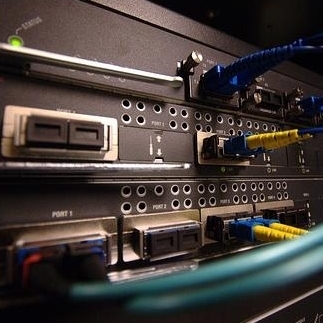The mobile and cloud storage markets have become increasingly linked due to shifting data demands. As businesses adopt bring-your-own-device policies and increasingly sophisticated applications, there is a need for a place to store those resources without compromising information. This has driven demand for both cloud-based infrastructure and software. The widespread adoption of solutions such as Salesforce’s mobile CRM apps clearly showcases how smartphones and tablets have affected the cloud at the software layer. However, mobile technology has also shifted demand for new hardware that is better optimized for lighter workloads.
This trend was recently highlighted by research from iHS iSupply, which found growth in the micro server market. Although worldwide shipments only reached 19,000 units in 2011, that number climbed to 88,000 in 2012. Analysts predicted continued growth through this year, estimating a 230 percent increase to 291,000 units by the end of 2013.
Although it is true that web applications have become highly sophisticated and responsible for complex tasks, not every piece of cloud-delivered software requires high-performance solutions. Micro severs emerged as hardware that is ideal for completing a large number of relatively lightweight workloads. Micro servers utilize a high number of low power processors to efficiently complete workloads at volume while still being cost effective. Writing for ZDNet, database developer David Chernicoff questioned whether businesses would find the technology beneficial or opt for more robust hardware and a larger number of virtual environments. He noted that the technology is particularly valuable for cloud providers looking for a solution somewhere in the middle of shared and dedicating hosting.
Chernicoff’s question of whether there would be space in the cloud data center for that kind of specialization appears to have been answered by market demand. IHS iSupply’s analysts noted that a micro sever motherboard generally consumes less than 45 watts of electricity, making the technology highly efficient when applied to the right class of workload.
“Micro servers provide a solution to the challenge of increasing data-center usage driven by mobile platforms,” said Peter Lin, senior analyst for compute platforms at IHS. “With cloud computing and data centers in high demand in order to serve more smartphones, tablets and mobile PCs online, specific aspects of server design are becoming increasingly important, including maintenance, expandability, energy efficiency and low cost. Such factors are among the advantages delivered by micro servers compared to higher-end machines like mainframes, supercomputers and enterprise servers – all of which emphasize performance and reliability instead.”
A healthy cloud hardware market
Although IHS iSupply recognized micro server technology as the fastest growing segment of the server market overall, researchers noted that demand for other hardware continues to increase at a steady rate. Servers optimized for virtualization, for example, have become a critical component of the data center. However, cloud storage companies may be faced with consolidation challenges as resources become increasingly virtualized. Writing for ZDNet, Forrester analyst Dave Bartoletti noted that businesses are now reaching a point where savings achieved through consolidation alone will not be enough to justify VM deployment. The responsibility for IT professionals will be to clearly define how virtualization provides value beyond consolidation.
“For most I&O pros, the easy workloads are already virtualized. Looking ahead at 2013, what’s left are the complex business-critical applications the business can’t run without (high-performance databases, ERP, and collaboration top the list),” Bartoletti wrote. “You won’t virtualize these to save on hardware; you’ll do it to make them mobile, so they can be moved, protected, and duplicated easily. You’ll have to explain how virtualizing these apps will make them faster, safer, and more reliable – then prove it.”
Bartoletti’s comments suggest not only more pressure on providers, but demand for diversified hardware. This means that, despite the expected spike in demand, micro severs will have to share data center space with a wide range of hardware that is capable of meeting both performance and affordability needs.







